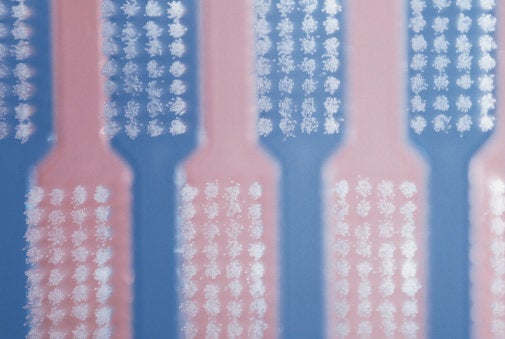
As a NYC Cosmetic Dentist, I find toothbrushes really interesting. Not only have they been around a loooong time (in one form or another), they are also regarded as indispensable. In fact, in a recent Lemelson/MIT survey, the toothbrush beat out the computer and the car as an invention that Americans said they couldn't live without. Imagine that: the toothbrush more important than the car. Boy, do we ever like our toothbrushes.
So where did this incredible (yet simple) device come from? Let's find out (and you'll probably be surprised at how long the toothbrush has been around.)
To start, the first toothbrush was almost certainly the human index finger. We know that ancient Egyptians were making a "tooth powder" as far back as 5000 BC (this would be the first toothpaste!) This "tooth powder" consisted of ash from ox hooves, myrrh, eggshell fragments and pumice. Since there is no evidence of a device used with this powder, it's likely safe to assume that it was rubbed onto the teeth with one's fingers.
The earliest known "device" used for teeth cleaning was what was called a "chewing stick," and was first used somewhere around 3500-3000 BC in ancient Babylonia. This "chewing stick" was essentially a twig with a frayed end (frayed from chewing, no doubt) that was used to clean teeth. Over the years, these chewing sticks were improved to almost resemble an actual "product." Ancient Chinese writings (circa 1600 BC or so) depict the use of chewing twigs culled from aromatic trees (likely to freshen the mouth), and also sharpened at one end (for use as a pick, obviously). In all honesty, this sounds like a pretty effective device.
The Chinese also seem to have developed the first actual "brush," as writings from 1223 suggest that monks used a brush made of horse-tail hairs to clean their teeth. This doesn't sound all that effective to me (the stick sounds better in my mind), but it does pave the way for more advancements.
Over the years, different animal hairs were used. During the Middle Ages, boar hairs were a favorite in the East, while the West preferred horse hairs (as they were softer), or even just toothpicks made from goose feathers or semi-precious metals (silver and copper). I guess they agreed with me that ultra-soft horse hairs probably aren't all that effective.
Okay, let's fast forward a bit -- the first recorded use of the actual word "toothbrush" was in 1690. A man named Anthony Wood wrote in his autobiography that he had "bought a toothbrush" from another man. I say this is the first recorded use, but it's not a stretch to assume people were calling these devices "toothbrushes" a bit earlier, it's just Anthony's writing is the first time we see the actual word. So he gets credit.
Now let's go to 1780. A man named William Addis made the first mass-produced toothbrush. Ten years earlier, while in prison, he felt the method for cleaning teeth there could be improved (it seems the chewsticks and animal hair brushes didn't make it to prison; they were still using rags with soot and such to clean teeth -- yuck!). So what he did was take a small animal bone, made some holes in it, tied some hair bristles he got from a guard through the holes, glued it all into place, and viola -- a toothbrush! It was easy to make, and it worked so well that upon release, he turned it into a business and became very wealthy (his company, which is now called Wisdom Toothbrushes, is still around today). The toothbrush he invented is very recognizable to us today.
In 1857 H.N Wadsworth was granted the first U.S. patent for toothbrushes. Around 1885, mass-produced toothbrushes were the norm (the Florence Manufacturing Company was the first to sell them in boxes. I don't know about you, but I like it when my toothbrush is packaged!)
Let's hit more modern times now. In 1937, Du Pont Laboratories invents nylon (we can credit a man named Wallace H Carothers with this.) It was only a matter of time before nylon bristles made their way to toothbrushes. Nylon obviously has quite an advantage over animal hair, even just from a perception sense ("Let's see ... should I brush my teeth with pig hair, or nylon ... hmmm, that's a really tough choice...").
And that's pretty much where we are today. Now we have some electric and sonic models (which I wrote about in my last post), and shapes seem to be the big thing today (toothbrushes with circular bristles, toothbrushes bent like a dental mirror, toothbrushes with rows of bristles in different heights, etc.) But generally, we've been using the same thing since the 1930s. And we've been using the same overall design since the 1780s. And, taking it one step further, we've been using instruments for teeth cleaning for thousands of years.
So there you have it -- the history of the toothbrush. I hope you enjoyed our little journey through time.
Until next time, keep smiling!